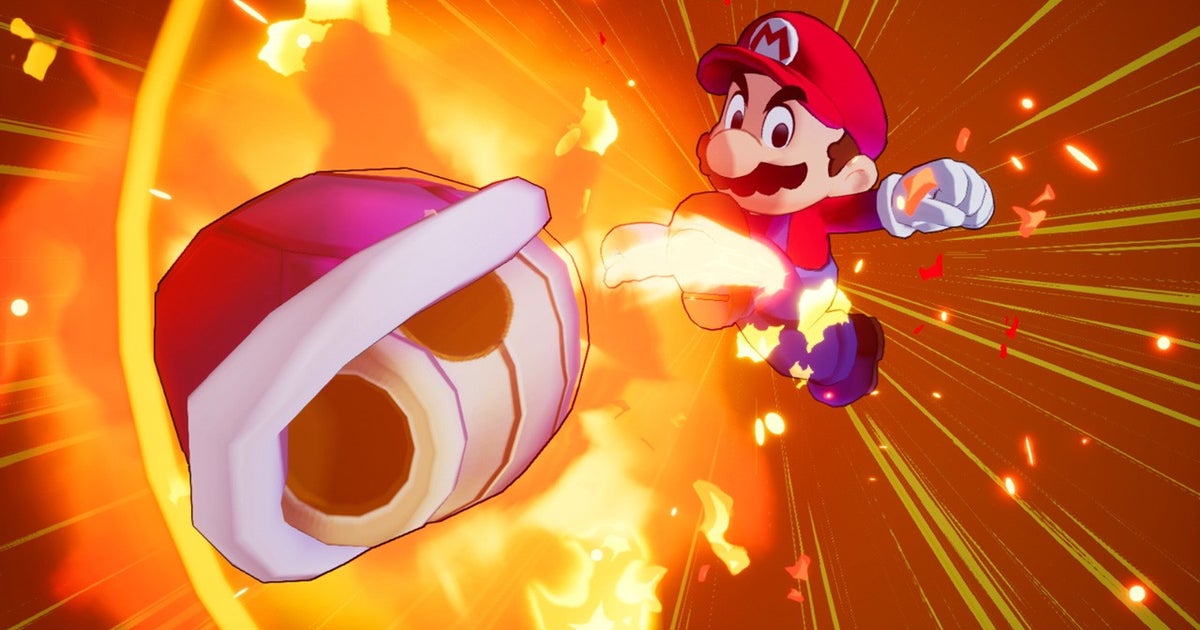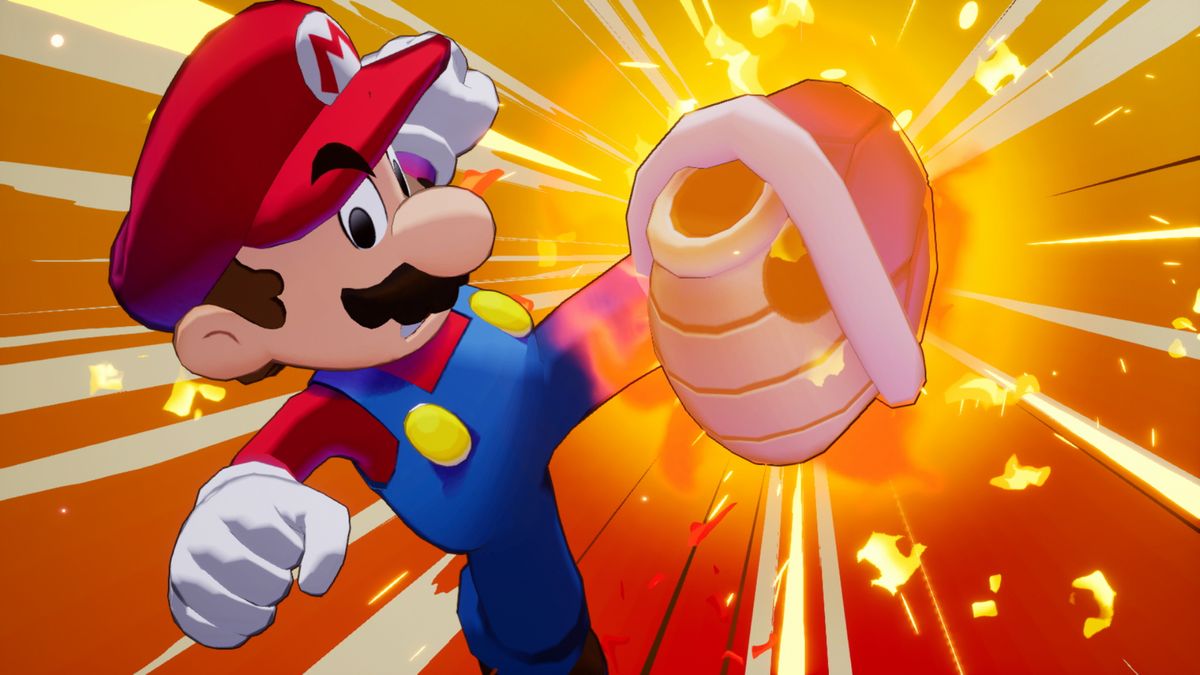Nintendo delivers seafaring adventure on the Nintendo Switch with Mario & Luigi: Brothership. Set in the oceanic world of Concordia, this RPG has puzzle-solving and combat in an island-hopping format that invites players to sail away their troubles.

Also Read: Batman: Arkham Shadow Review: A VR Experience Bridging the Arkham Universe
Mario & Luigi: Brothership is set in the oceanic world of Concordia, an archipelago of floating islands that Mario and Luigi must reconnect by linking them to Shipshape.
Shipshape is a ship and hub island with fittingly named as it represents the brothers’ quest to unite the scattered lands. This vessel is the hub where Mario and Luigi manage side quests and interact with various plug-themed NPCs.
Each new island presents a biome that Mario and Luigi must explore, activating lighthouses on each to reconnect them with Shipshape. This element shows the brothers’ mission to reunite Concordia.
Concordia’s inhabitants, a quirky society of anthropomorphic plug sockets and computer ports.
One of Mario & Luigi: Brothership’s features is its telescope mechanic, which also doubles as a cannon. Players scan the horizon for new islands and then fire toward their destination.
Each island is unique ranging from lava and ice worlds to elaborate hedge mazes and even a murder mystery setting. This variety keeps gameplay from becoming repetitive.
The island-hopping structure breaks up the gameplay, ensuring players are always moving to a new environment and rarely stuck in the same location for too long.
Traveling to islands on Shipshape’s currents creates a real-time experience, which some players may find immersive but others might find a bit slow.
Players control Mario and Luigi, but in Brothership, Luigi’s role expands with Luigi Logic, a mechanic where Luigi has insightful brainwaves to solve puzzles. This feature introduces mini-games and puzzles where Luigi assists Mario by controlling platforms or switches.
The game uses a picture-in-picture mechanic for certain puzzles, allowing players to control both characters and adding a nostalgic touch reminding of classic Mario & Luigi puzzles.
Turn-Based Combat with a Twist: Mario & Luigi: Brothership incorporates active turn-based combat, where each brother has unique moves that players must chain together for effective attacks.
The feature of combat is the battle plug system, which provides players with advantages by combining plug abilities. These plugs offer unique buffs like status effects and area-of-effect attacks.
Plugs can be mixed to create complex attack combinations. Boss fights require players to use plugs wisely, rewarding them for timing and plug combination choices. This makes longer battles with multiple phases dynamic and fulfilling.
Mario & Luigi: Brothership uses a clean visual style with subtle cel-shading that adds a fresh look while retaining the familiar charm of the series.
Each island biome from jungles to deserts is rendered with details. The range of environments keeps the game’s visuals lively and engaging.
The storyline is more complex than past entries with a surprisingly mature theme centered around the idea of connection.
Concordia’s Uni-Tree concept symbolizes unity and growth. Brothership retains the series’ trademark humor like the “plug pig” character Soutlet, who speaks in swine puns.
Some sequences explore genres like psychological horror.
Also Read: Sonic X Shadow Generations Review: One of the Best Sonic Games
Mario & Luigi: Brothership is the longest game in the series. This playtime is justified with its expansive world, varied islands and side quests.
Mario & Luigi: Brothership maintains a steady pace without overstaying in one place. Each island features optional side quests and collectibles, adding replay value and allowing players to engage with the world of Concordia more fully.
Failing a battle gradually reveals easier settings, helping hand for less experienced players while maintaining a challenge for veterans.
Unlike traditional difficulty settings players must fail multiple times in order to access easier modes, which might be frustrating for those looking for an immediate adjustment.
While the combat is engaging, its frequency can feel intrusive especially during exploration or puzzle-focused sections. The Shipshape travel mechanic can feel slow and cumbersome, as players must sail in real-time and can miss destinations if caught in circular currents.
Having a permanent ocean mini-map can feel cluttered and the game’s notifications about nearby islands can be repetitive.
The soundtrack in Mario & Luigi: Brothership is a major highlight. The score leans into nautical themes featuring sea shanties, lively accordion tunes and pompous horns that perfectly capture the game’s carefree, seafaring spirit.
This music is combined with the bright, cel-shaded visuals, makes Mario & Luigi: Brothership feel like a true vacation from the traditional Mario settings.
Completing Mario & Luigi: Brothership takes around 20 hours, but side quests and optional puzzles extend gameplay time.
Side quests often is around returning to previous islands to help NPCs with tasks, though rewards can vary in quality. These quests allow players to revisit and explore Concordia’s quirky communities.
The game’s cartoony aesthetic, characterized by flat shading and bold outlines, is intentional, playing to the strengths of the Switch’s hardware while delivering a light-hearted experience.
This visual choice allows Mario & Luigi: Brothership to fit with other Mario RPGs like Paper Mario: The Thousand-Year Door and Super Mario RPG.
Sailing around Concordia involves a mechanic where players navigate by selecting ocean currents that lead to new areas.
Using the cannon telescope to spot islands provides a subtle nod to open-world exploration. Though somewhat linear, this structure supports Mario & Luigi: Brothership’s role as a focused yet open RPG.
Also Read: Pokemon News: Game Freak Confirms Massive Data Breach




/cdn.vox-cdn.com/uploads/chorus_asset/file/25713430/Switch_Mario_LuigiBrothership_scrn_24.jpg)